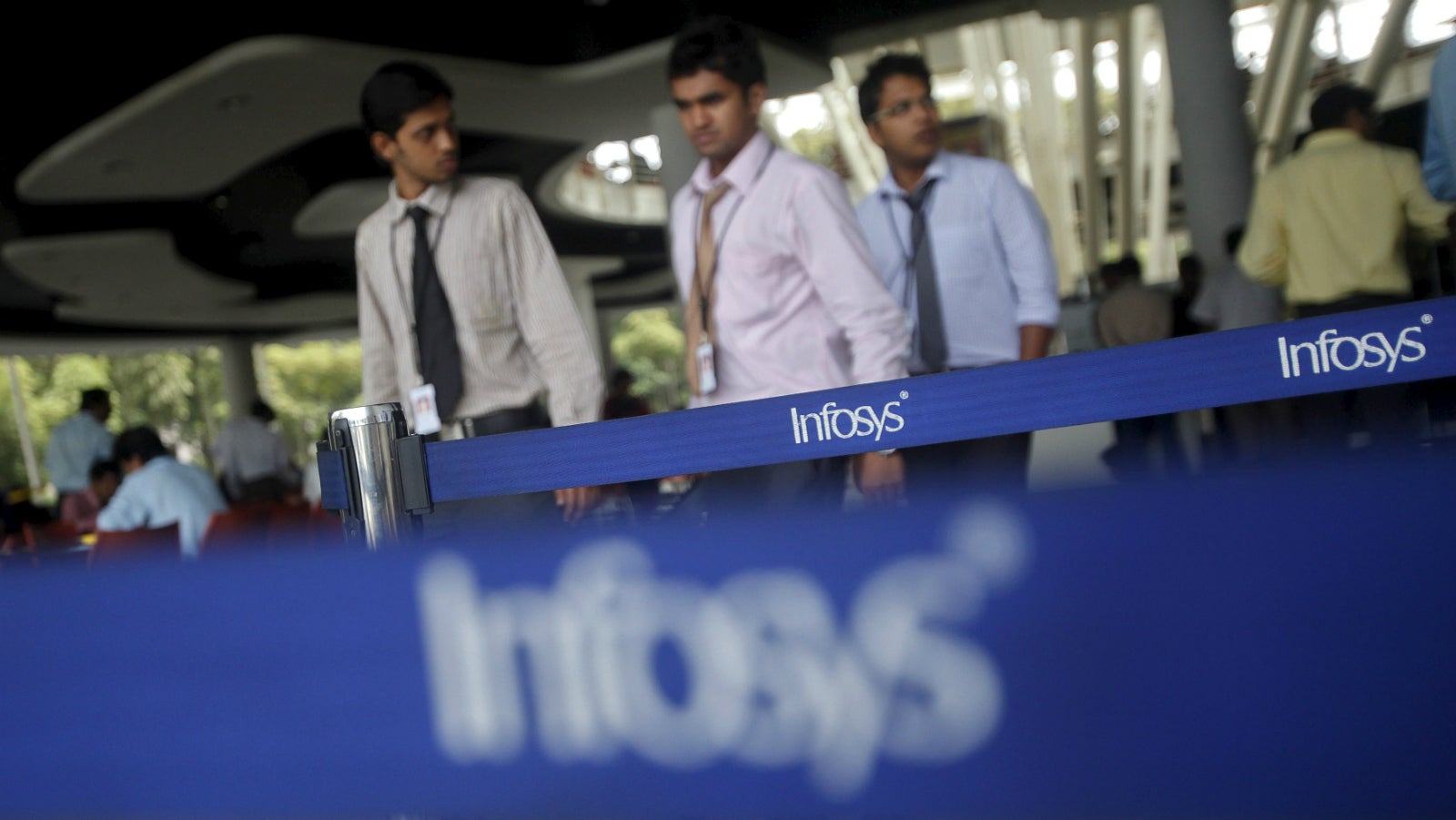Cheap Indian engineers now have no place in Donald Trump’s America
The Donald Trump administration may have hammered the final nail in the coffin for low-paid Indian information technology (IT) workers out on outsourcing gigs in the US.


The Donald Trump administration may have hammered the final nail in the coffin for low-paid Indian information technology (IT) workers out on outsourcing gigs in the US.
On March 31, the US Citizenship and Immigration Services (USCIS) issued a memo (pdf) providing guidance to its officers that not all computer programmer positions qualify for the H-1B visas that allow foreign professionals to work in the US for up to six years. Currently, these visas are heavily utilised by India’s $150-billion IT sector to fly relatively inexpensive engineers to the US.
The memo emphasised that ”an entry-level computer programmer position would not generally qualify as a position in a specialty occupation.” So, in order to secure an H-1B visa, companies must now prove that their employees possess specialised knowledge required for highly-skilled positions. Alongside, on April 03, the USCIS announced multiple measures to check H-1B visa fraud and abuse, including targeted visits to workplaces.
For the H-1B programme, the US government defines (pdf) a specialty occupation as “one requiring theoretical and practical application of a body of highly specialised knowledge and the attainment of a bachelor’s degree or higher (or its equivalent) in the field of specialty.”
“The upshot is that a computer programming position is not automatically a specialty occupation,” Ron Hira, an associate professor at Washington DC’s Howard University, who specialises in offshoring and high-skill immigration, explained via email. ”The burden will be on the employer to demonstrate that the computer programming position it is trying to fill with an H-1B worker meets the ‘specialty occupation’ requirement.”
“The job itself must be a specialty occupation,” he added.
Anecdotal evidence suggests that over 50% of the Indian H-1B applicants seeking computer programmer positions are generally employed at wage-level 1 (i.e. entry-level), according to Poorvi Chothani, managing partner at LawQuest, an immigration law firm with offices in the US and India.
Hira’s analysis of approved labour condition applications (LCAs) for entry-level computer programmers in the 2015 financial year reflect the clear dominance of Indian IT companies. LCAs are the first step in the H-1B visa application process.
“In my opinion, the Indian companies have not been 100% compliant with the H-1B programme,” Chothani explained, “This is because Indian companies who use the H-1B programme through their affiliate companies in the US get as many people as they can at entry-level positions because you pay the least salary at Level 1.”
With that option now under scrutiny, the US arms of Indian IT companies may be forced to send better educated and more experienced workers; they’ll, thus, be applying for H-1B visas for employees above the entry-level. “It makes a huge difference to the numbers because there could be anywhere from a 5% to 30% salary jump in these (Level-2) positions, depending on where they are working,” Chothani added.
The National Association of Software and Services Companies (NASSCOM), a trade group that represents the Indian IT industry, played down the possible impact of the new USCIS memo. “The clarifying guidance should have little impact on NASSCOM members as this has been the adjudicatory practice for years and also, as several of our member executives have noted recently, they are applying for visas for higher-level professionals this year,” the association said in an emailed statement.
The Indian IT sector has been preparing for this sort of tightening for some time now. For instance, TCS, India’s largest IT services company, has sharply reduced the number of US visa applications: In 2016, it filed only 4,000 compared to 14,000 the year before. In 2015, the company also began tweaking its business model to effectively operate in “a visa-constraint regime,” former TCS CEO N Chandrasekaran explained in January.
Late last year, Infosys, the second-largest in the sector, too, signalled that it would look to hire local talent more aggressively in the US, a far cry from the turn of the decade when such companies were infamously called out for ”body shopping“—i.e, hiring Indian software professionals to use them on short-term projects elsewhere.
Despite all such evasive action, though, the US clampdown will hurt the sector. “It’ll be a short-term jolt,” said Sanjoy Sen, a former Deloitte partner and doctoral researcher at UK’s Aston Business School, although the exact magnitude of the impact will depend on the size of the companies and their levels of preparation. Smaller firms with a headcount in the hundreds, in particular, may be harder hit, Sen said.
Companies will also have to contend with the impact of Brexit—Europe is Indian IT’s second-largest market—as well as an apparent slowdown in work permit approvals for Indian techies in Singapore, an important international hub for the sector. “Sadly, what has happened is that these global events have converged in terms of timing and, therefore, it enhanced the total combined impact,” Sen added.
There may be more trouble in the offing: Four immigration bills currently in the US Congress could further affect the H-1B programme.
“With both the houses being predominantly Republican, there is a great chance that the four immigration bills that are pending in Congress may be passed in some form or other,” said LawQuest’s Chothani, “and some of the measures proposed in the bills are going to make engaging foreign nationals expensive and difficult.”